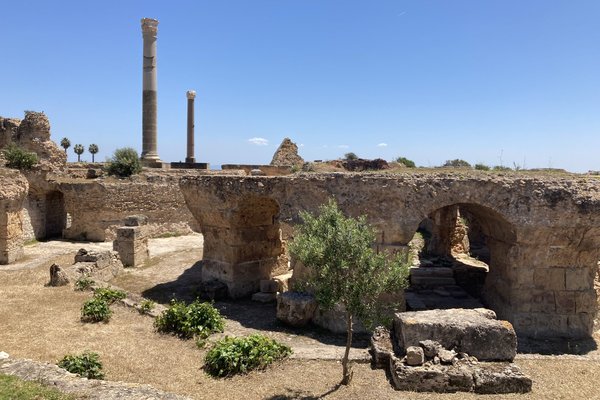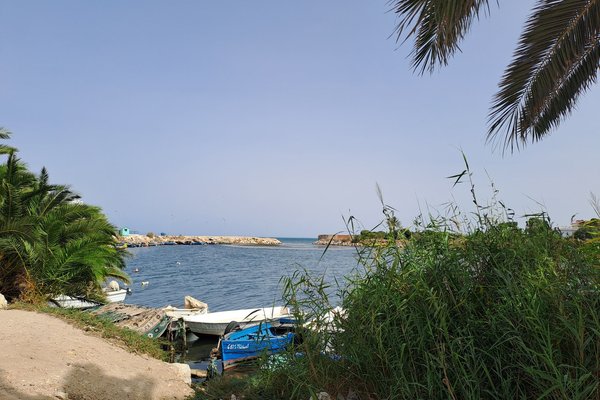Tunisia
Carthage
The Archaeological Site of Carthage comprises the remains of an influential commercial city and port from Antiquity, whose literary renown has continued.
Founded by Phoenician colonists around 814 BCE, the prosperous city became the cradle of Punic civilization and the major maritime power in the Mediterranean. After it destroyed the city in the Third Punic War in 146 BCE, Rome founded a colony at the same site. The city blossomed again and many monumental structures were built such as a large amphitheater. It became one of the most important cities of the Roman Empire and a center of early Christianity.
Community Perspective: The site can be “a bit disappointing because not much is left”. From the Punic period, the port area and the Tophet are worth visiting, as well as the Baths from Roman times. Be aware that the locations are all separate “islands”, spread across a large area, with their own access (fortunately you have to pay only once).
Site Info
Official Information
- Full Name
- Archaeological Site of Carthage (ID: 37)
- Country
- Tunisia
- Status
-
Inscribed 1979
Site history
History of Carthage
- 2007: Name change
- From "Site of Carthage" to "Archaeological Site of Carthage"
- 1979: Inscribed
- Inscribed
- Type
- Cultural
- Criteria
- ii
- iii
- vi
Links
- UNESCO
- whc.unesco.org
- Official
-
- commune-carthage.gov.tn — Carthage
- tunisiepatrimoine.tn — Ministry of Cultural Affairs: The Amphitheatre of Carthage
- tunisiepatrimoine.tn — Ministry of Cultural Affairs: The Antoninian Baths
- Related
-
- livius.org — Carthage - by Livius, Articles on Ancient History
- planetware.com — Exploring the ruins of Ancient Carthage
- en.wikipedia.org — Wiki on Carthage
All Links
UNESCO.org
- whc.unesco.org — whc.unesco.org/
Official Website
- commune-carthage.gov.tn — Carthage
- tunisiepatrimoine.tn — Ministry of Cultural Affairs: The Amphitheatre of Carthage
- tunisiepatrimoine.tn — Ministry of Cultural Affairs: The Antoninian Baths
Related Resources
- livius.org — Carthage - by Livius, Articles on Ancient History
- planetware.com — Exploring the ruins of Ancient Carthage
- en.wikipedia.org — Wiki on Carthage
News Article
- April 21, 2023 globalconstructionreview.com — German architect wins contest to remodel Carthage site
- Aug. 14, 2019 yahoo.com — Tunisia demolishes homes to protect ancient site
- Jan. 28, 2014 theguardian.com — Carthaginians sacrificed own children, archaeologists say
- Feb. 18, 2010 eurekalert.org — Study debunks millennia-old claims of systematic infant sacrifice in ancient Carthage
Community Information
- Community Category
- Archaeological site: Phoenician
Travel Information
Tunisia hotspot
Recent Connections
-
Monty Python (Filming Locations)
Life of Brian [link]
-
Perfect Inscriptions
1979 -
Alexandre Dumas
Dumas visits Carthage in his work "Le V…
Connections of Carthage
- Individual People
-
-
Belisarius
Belisarius captured Carthage during the Vandalic War in 533. "Belisarius drew up the army for battle before the city walls, but as no enemy appeared, he led his army into the city, after again exhorting his troops to show discipline. The Roman army received a warm welcome from the populace, which was favourably impressed by its restraint. (...) Belisarius himself took possession of the royal palace, seated himself on the king's throne, and consumed the dinner which Gelimer had confidently ordered to be ready for his own victorious return".See en.wikipedia.org
-
Painted by JMW Turner
Dido building Carthage 1815 -
Jean-Michel Jarre
In August 2013, Jarre holds a concert in the amphitheatre of Carthage. (Wikipedia) -
Alexandre Dumas
Dumas visits Carthage in his work "Le Véloce ou Tanger, Alger et Tunis.
-
- Geography
- Trivia
-
-
Opera
Les Troyens, Berlioz & Dido and Aeneas, Purcell -
Former Largest Cities
Around 300 B.C. -
Famous Love Stories
Dido and Aeneas
-
On Coins
The double Punic harbour of Carthage is on the 2 Tunisian dinar coins.See en.wikipedia.org
-
On Banknotes
Hannibal and Carthage on the 5 Tunisian dollar note
-
- History
-
-
Specified on Herodotus' Oikumene
-
Sieges and Battles
Romans 149/6BC -
Phoenician world
Founded by the Phoenicians -
Pisan colonies
Between 1030 and 1035 Pisa went on to successfully defeat several rival towns in the Emirate of Sicily and conquer Carthage in North Africa. (wiki) -
Located in a Former Capital
Carthaginian Empire, 814BC-146BC -
Punic Empire
The city developed from a Canaanite Phoenician colony into the capital of a Punic empire which dominated large parts of the Southwest Mediterranean during the first millennium BC. (wiki) -
Mentioned by Pliny the Elder
Chapter 6: Great Carthage
-
- Damaged
-
-
Destroyed during invasion
Third Punic War in 146 BC
-
- World Heritage Process
-
-
Perfect Inscriptions
1979
-
- Human Activity
-
-
Sea Ports
-
Human Sacrifice
The "Tophet" Cemetery - The remains of many children have been found which might indicate (as the Romans claimed) evidence of the Phoenician practice of child sacrifice or, alternatively, just a child cemetery. -
Festivals
The International Carthage Festival (music, theater) is held every other year in the Roman theater (July-August).
-
- Constructions
-
-
Cenotaph
Saint-Louis cenotaph on Byrsa Hill: the sculpture of a recumbent figure (Saint Louis of Carthage) -
Latrines
See www.mmdtkw.org
-
Baths
Roman baths -
Roman amphitheatres
Roman amphitheatre
-
- Timeline
-
-
Built in the 1st century
Roman Carthage, founded by Augustus -
Built in the 6th century BC
Heyday of Phoenico-Punic civilization: in the 6th century Carthage had conquered the territory of the Libyan tribes and the old Phoenician colonies and had control over the North African coast, in 509 BC, a treaty was signed between Carthage and Rome indicating a division of influence and commercial activities.
-
- WHS Hotspots
-
-
Tunisia hotspot
25min by bus or half an hour by tramway
-
- Science and Technology
- Visiting conditions
-
-
Foreigner prices
Resident: 9 Dt, Non-resident: 12 Dt
-
- Literature & Film
-
-
Monty Python (Filming Locations)
Life of Brian [link]
-
News
- globalconstructionreview.com 04/21/2023
- German architect wins contest to r…
- yahoo.com 08/14/2019
- Tunisia demolishes homes to protec…
- theguardian.com 01/28/2014
- Carthaginians sacrificed own child…
Recent Visitors
Visitors of Carthage
- Adrian Turtschi
- Alberto Rodriguez Gutierrez
- Alexander Barabanov
- Alexander Lehmann
- Ali Zingstra
- A. Mehmet Haksever
- AmyAbroad
- Ana
- Ana Lozano
- Argo
- Artur Anuszewski
- Aspasia
- Atila Ege
- Badwater
- BaziFettehenne
- bergecn
- Bill Maurmann
- Boj
- Bram de Bruin
- Brendan Carroll
- Bruno_Pires
- Cezar Grozavu
- Christer Sundberg
- Christian Wagner
- Christoph
- Christravelblog
- Cobaltrage
- Colossus
- Corinne Vail
- ctravel
- CugelVance
- cutecid
- Dagmara
- David Marton
- del
- Dimitar Krastev
- Dimitrios Polychronopoulos
- Dolemite92
- DonQuijote
- edstar500
- Ellen Nielsen
- Els Slots
- Emili Xaus
- Erfe91
- Erik Jelinek
- Eva Kisgyorgy
- Evgenii
- Fan Yibo
- Federico P.
- Feldhase
- Felicité
- Geert Luiken
- George Gdanski
- GeorgeIng61
- Gjert
- Grzegorz Andruszkiewicz
- Hammeel
- Harald T.
- Harry Mitsidis
- H Beswick
- henrik_hannfors
- henryjiao18
- Iain Jackson
- Ian Cade
- Ivan Rucek
- James Bowyer
- Janos
- Jarek Pokrzywnicki
- Javier
- Jawnbeary
- João Aender
- Joel on the Road
- Jonas Hagung
- Jonas Kremer
- jonathanfr
- Juha Sjoeblom
- KarenBMoore
- Kbecq
- KentishTownRocks
- Kerékgyártó
- Klaus Freisinger
- Krijn
- Krzysztof B
- La Concy
- Lado Joel
- Lars Bogstad
- LaVale
- Liamps91
- Loic Pedras
- Lucio
- Ludvan
- Luis Filipe Gaspar
- Maciej Gil
- Maciej Gowin
- Malgorzata Kopczynska
- marcel staron
- MarcoB_0
- Marcobrey
- marc Rouserez
- Marlies van Wolfswinkel
- Martin
- Martina Rúčková
- Marty
- MaxHeAnouBen
- MaYumin
- M. Huineman
- Michael Novins
- michaelsballard
- Mikko
- Mikko Syrjä
- Milan Jirasek
- Miloš Tašković
- MMM
- Monica66
- Monica Tasciotti
- MoPython
- Morodhi
- Naim Y
- Nihal Ege
- PabloNorte
- Patrik
- Persian Globetrotter
- petar
- Peter Lööv
- Petteri
- Philipp Leu
- Philipp Peterer
- Pincze
- Piotr Wasil
- Potsdamer
- Priyaranjan Mohapatra
- Randi Thomsen
- Reza
- Rick Ohm
- Roger Ourset
- Roman Bruehwiler
- Roman Raab
- Rudegirl
- Sandmann15
- Sandra!
- saraleonela
- Sergio Arjona
- Shandos Cleaver
- Solivagant
- Squiffy
- Ssong.x
- Stan
- Stanislaw Warwas
- Stefan Loov
- Sutul
- Svein Elias
- Szabolcs Mosonyi
- Szucs Tamas
- Tamara Ratz
- Taotao Chen
- Tarquinio_Superbo
- Thomas Buechler
- Thomas van der Walt
- Thorben
- Tim Allen
- Timothy C Easton
- tony0001
- triath
- Viaje al Patrimonio
- voyager
- WalGra
- Walter
- Westwards
- Wimmy
- Wojciech Fedoruk
- Wo_ko
- Xiquinho Silva
- YaroMir
- Yongcheng Liu
- Zach
- Zoë Sheng
- Zsuzsanna Forray
Community Reviews
Show full reviews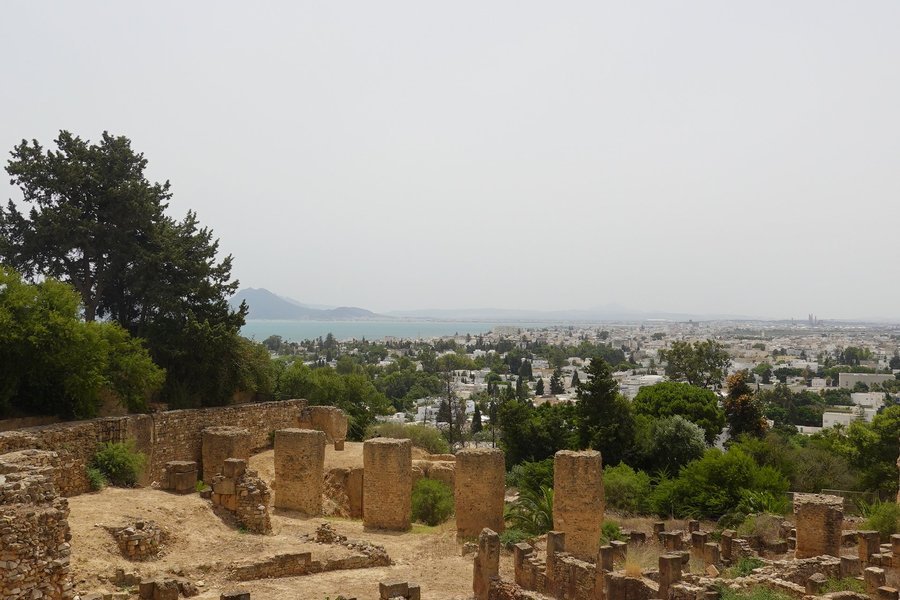
I will not return to the very well-written descriptions of my predecessors of the various places on the general site of Carthage. Carthago delenda est exclaimed the Roman senator Cato the Elder at the end of each of his speeches. He spoke of Punic Carthage as a perpetual threat to Rome. Conversely, I have tried, like Els, to disregard the Roman city in favor of the Punic city; there are enough much more complete Roman ruins elsewhere in the Mediterranean, even in Tunisia, such as Tuburbo Majus, for example, which, due to a lack of exhaustive excavations, is not even proposed for the indicative list, even though the buildings there are much more complete.
So we parked Wilson's mobile home in the Byrsa Hill parking lot in front of Saint-Louis Cathedral (Late 19th century) and walked in Flaubert's footsteps to the excavation site. The entrance fee for non-residents hasn't changed since 2022. The excavations might seem a little disappointing if it weren't for the 180° panorama of the Bay of Tunis, the chic Carthage district below, and Cape Bon in the distance. Alas, I'd almost say: as usual, the museum and the cathedral were closed, and, in the middle of the excavations, there's this recumbent statue of the King of France, Louis IX, a little incongruous in the middle of this place of exceptional ancient historical importance.
We continued our route on foot through the Roman theater, which was of no interest, as it had been almost completely reworked under …
Keep reading 0 comments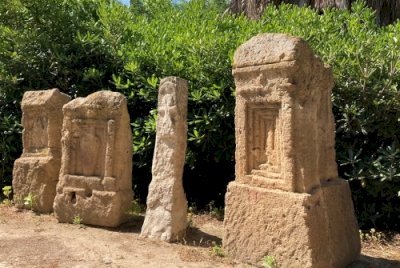
Carthage may not be Tunisia’s grandest attraction anymore, its rich and powerful empire by far superseded the importance of the country it currently is part of. Unfortunately, not a lot is known about the cultural history of the Carthaginians – most books focus on the military history and their battles with the Romans (using sources written by Romans). You'll know enough if you listen to only one podcast on that subject. At an exhibition on Punic Carthage that I visited in Leiden in 2015, I found more to my taste (those white and blue glazed pendants!). The accompanying book, “Carthage: fact and myth”, still is the best one I could find as it covers a range of topics including the Punic writing system, the relationship with the Numidians, and its influence on European art.
I choose to do a half-day tour with Le Lemon Tour for my real-life visit. They own a bicycle shop in Carthage and conduct tours – on a bike of course! - to the archaeological sites. They are very professional and you can also just rent a bike to explore the area on your own. That a bike is such a good way of transportation here, also says a lot about the terrain. The sites are all separate “islands”, with their own access, in between the quiet and prosperous residential areas. Fortunately, you have to pay your entrance fee only once: for 12 TD (4 EUR) you can visit the 8 associated sites and they …
Keep reading 0 comments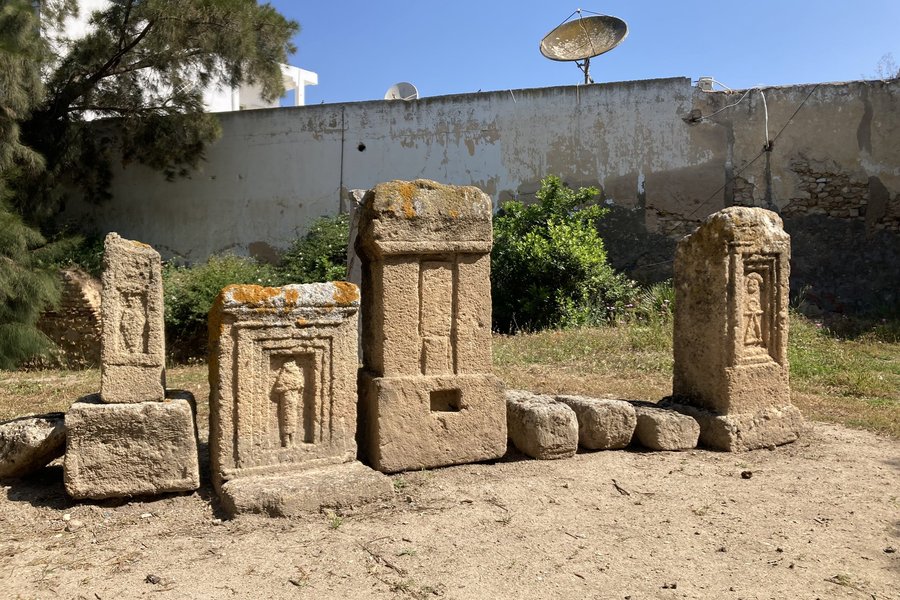
I'm not even bothering to look for fitting pictures. The site is spread out far enough that on foot you may not cover all especially as some require crossing roundabouts, but you should do the bath, villas, amphitheater and the museum. They are all covered by one ticket.
I took the train from downtown Tunis all the way across which costs hardly anything and takes for 30 minutes. Your stop will be very close to the baths.
Overall there isn't much left of the place and I've seen much better ruins. As far as I understand, and don't take my word for it, the city was destroyed in favor of keeping Dougga. It's historically still important but not impressive.
Highlights were more to see the rich area of Tunisia and great lunch at the Tennis club just nearby the museum.
Keep reading 0 comments
Carthage is a bit disappointing because not much is left but the trip alone is worth it. Take an electric trolley from Tunis and you can walk to the main part of the site from the Carthage Hannibal trolley stop. The museum is quite good but watch out for "freelancing" guides. The Roman mosaics in the courtyard of the museum are breathtaking and are just casually laying everywhere you look. Also, the view of the sea is fantastic from the hilltop. We tried to find the stadium but never could. Watch your belongings on the trolley!
Keep reading 0 comments
Unfortunately not much of what was Carthage remains today. The museum however, explains really well its tragic past and former glory. Beautiful statues, figures and parts of buildings abound in the museum. The museum is right next to a Christian Cathedral that is worth visiting. We also got to see the Roman Amphiteathre and the Antonine Baths - the remains of the Roman Empire that conquered the Carthaginians. Carthage abounds with many historical places and we had planned only a day tour of the area and thus managed just a few sites. I would suggest spending a longer period to visit Carthage and the nearby towns and Capital city.
Keep reading 0 comments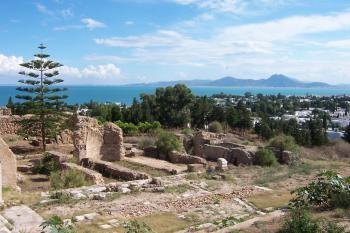
There is not much left to see of Carthage which really is a testament to the Romans who totally obliterated their biggest rival of the period. It is pretty important therefore to get some background knowledge on the place before you go because it really is quite impressive.
The main site on Bysra Hill has some very impressive views across Tunis and to the Cape Bon Peninsula. If you go for a bit of a walk you will see that there are a few more intact bits below the forum. Then if you head down to the sea at the Punic Ports this is perhaps the best area as the lay-out of the ports that once held the mightiest navy in the world are still there, and next to them is the Tophet where it is reported that Child sacrificing went on, and the stalea that litter the site can be seen as an eerie testament to that. Further along to coast are the Roman Baths which are huge and probably the most impressive site to look at.
Carthage is very easy to get to from central Tunis there is a TGM train that runs there from the end of Ave. Boiurigibba (the main avenue) it takes about 25 minutes and there are four stations scattered around the sites to help you get around. The locals are ridiculously friendly and helpful
Keep reading 0 comments
I agree with the other posters that the present site doesn´t offer as much to see as one might expect, which is only understandable if you know what the Romans did to Carthage (completely razed the city, killed or enslaved its people and poured salt on the ground so that nothing would ever grow there again). However, a Roman city did eventually form there, and its ruins are still impressive, especially the baths. You mustn´t take pictures of the Tunisian President´s palace nearby, so beware! The guards may take your camera away! Anyway, besides the very few genuinely Carthaginian remnants and the great view of the sea, the most important thing is just to go there and to know that you´re standing on the site of one of the world´s great civilizations - one that brought mighty Rome almost to its feet.
Keep reading 0 comments
